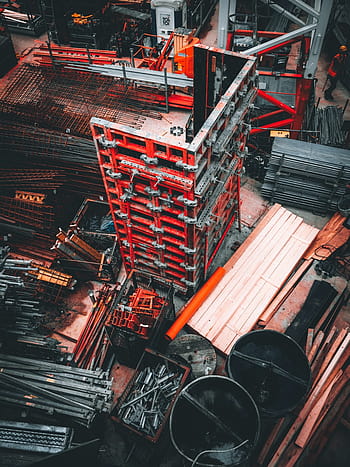
In the ever-evolving landscape of modern industry, the interplay between engineering, management, and architecture has never been more crucial. Each of these disciplines brings unique perspectives and skill sets to the table, creating a dynamic synergy that can transform visionary concepts into tangible realities. As we explore the intersections of these fields, we uncover not just the technical proficiency required in design and construction, but also the strategic thinking and leadership necessary to bring projects to fruition.
Structures Insider serves as a growing hub for insights on these topics, offering a platform for professionals and enthusiasts alike to engage with the latest trends and innovations. By bridging the gaps between engineering, management, and architecture, we can foster a more holistic understanding of how these elements work together to shape our built environment. Whether it’s optimizing resource management, enhancing design efficiency, or pioneering sustainable building practices, the collaboration among these disciplines is essential for addressing the challenges of today’s complex projects.
Engineering Innovations in Architecture
The intersection of engineering and architecture has led to remarkable advancements that redefine how we perceive and construct buildings. Innovative materials, such as self-healing concrete and advanced composites, have transformed the durability and longevity of structures. These materials not only enhance the aesthetic appeal of buildings but also contribute to sustainability by reducing the environmental impact over their lifecycle. Engineers and architects now collaborate closely to integrate these materials, ensuring designs are both functional and visually impressive.
Building Information Modeling (BIM) represents another significant innovation, revolutionizing the design process. This technology enables architects and engineers to create detailed 3D models of structures before construction begins. By simulating various scenarios and potential challenges, teams can optimize materials and labor usage, ultimately leading to cost savings and reduced waste. The use of BIM fosters a more collaborative environment where both disciplines can contribute their expertise, leading to better decision-making throughout the project lifecycle.
In addition to materials and modeling, smart technologies are increasingly being integrated into architectural designs. The incorporation of sensors, IoT devices, and automation systems enhances energy efficiency and occupant comfort. Buildings can now adapt to their environments in real-time, adjusting lighting, heating, and cooling based on usage patterns. This smart approach not only maximizes the functionality of the space but also aligns with modern sustainability goals, pushing the envelope of what is possible in both engineering and architectural realms.
Effective Management Strategies in Construction
Structural engineering
Effective management in construction requires a blend of strategic planning, resource allocation, and team coordination. One primary strategy is to establish clear communication channels among all stakeholders. This facilitates collaboration between architects, engineers, and construction teams, ensuring that everyone is on the same page regarding project goals, timelines, and updates. Regular meetings and the use of digital communication tools can help maintain transparency and foster an environment where issues are addressed promptly.
Another essential strategy is the implementation of project management software to keep track of tasks, resources, and budgets efficiently. These tools allow managers to monitor progress in real time, identify potential delays, and allocate resources effectively. By utilizing project management software, construction managers can anticipate challenges before they escalate and make informed decisions to keep the project on track. This level of oversight is crucial for maintaining the balance between quality and efficiency on site.
Lastly, investing in team development through training and mentorship can enhance productivity and morale. Ensuring that all team members are equipped with the necessary skills not only improves the work environment, but also leads to higher quality outcomes. By nurturing talent and encouraging continuous learning, construction managers create a resilient and adaptable workforce capable of tackling the dynamic challenges of the industry.
Integrating Design and Functionality
In the realms of engineering, management, and architecture, the integration of design and functionality is crucial for creating structures that not only look appealing but also serve their intended purpose efficiently. The collaboration among architects, engineers, and management professionals allows for a balance between aesthetic values and practical requirements. This synergy ensures that buildings and environments are crafted with user experience in mind while adhering to safety protocols and sustainability standards. By recognizing the importance of this integration, teams can develop solutions that meet client expectations and regulatory demands.
Moreover, the role of technology in this integration cannot be overlooked. Advanced software tools and modeling techniques enable professionals to visualize and analyze designs before construction begins. This capability facilitates better decision-making, as stakeholders are able to foresee potential challenges and resolve them early in the process. By utilizing data-driven insights, teams can enhance both the design quality and functionality, leading to innovative solutions that address real-world problems. The result is a built environment that not only serves its practical purpose but also elevates the overall aesthetic experience for its users.
Lastly, ongoing communication among all parties is essential for successful integration. Regular meetings, collaborative platforms, and clear documentation help ensure that everyone is aligned on project goals and objectives. This open dialogue fosters an environment where ideas can be shared and refined, leading to optimal designs that meet both aesthetic and functional needs. When engineering, management, and architecture come together seamlessly, the outcome is a space that reflects vision, purpose, and innovation, ultimately contributing to a more effective and inspiring built environment.
